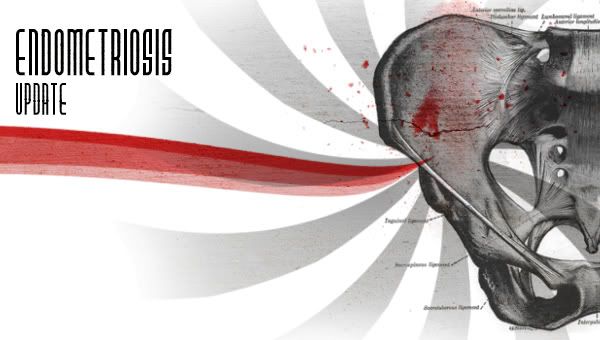One of the problems with a disease like endometriosis is that, because our understanding of the disease changes over time, the things that we hold as true today may turn out to be inaccurate, misunderstood, or just plain wrong in the future. For example, it used to be thought that endometriosis was a problem reserved almost exclusively for women in their 30’s, ‘career women’ as they used to say. There never seemed to be any rationale for this, no reason as to why women of this age appeared to be more at risk, it was just accepted, most likely because the shared experience of many people in the field led them to that conclusion.
However, this perception seems to be radically shifting, especially over the last five years or so. Nowadays it is becoming increasingly recognised that cases of endometriosis are rising higher and higher in younger and younger women, particularly girls in adolescence (case in point, there was a recent report of an 11 year old girl diagnosed with an endometrioma). If we look at the literature we can see that in the last 10 years there have been 526 articles published containing the keywords ‘endometriosis’ and ‘adolescent’. Compare that to the previous decade there were only 278 articles published.
So why might this be the case? Is there some evidence to suggest young women are becoming more susceptible to the disease? Or is it that increased awareness, both in the medical and public environment, leads to women getting their symptoms investigated seriously at a younger age? I know that the average time until diagnosis stands at a completed unacceptable 7-9 years (depending on who you talk to) and I also know that many, many women have to struggle to get their symptoms taking seriously in the first place, so the age at which a woman is diagnosed cannot be used as an indicator for when the disease first appeared. This is probably where the whole idea of endometriosis being a disease of women in their 30’s came from; because that was the age they were being diagnosed, not the age at which the disease/symptoms appeared.
Have you ever watched a horror film where the protagonist goes into a room, expecting to find a nasty surprise, only to find the room is empty? They feel a huge sense of relief, turn around to walk away and then a monster jumps out of the shadows, in the process lifting you several feet off your chair, well endometriosis is kind of like that monster. Because even if endometriosis is removed surgically, and we all breathe a collective sigh of relief, it can still be waiting in the shadows. This study from Italy exemplifies the recurrent potential of endometriosis with its finding that approximately 1 in 5 women undergoing laparoscopic surgery for endometriosis experienced recurrence of the disease. Further studies looking at a wide range of literature found that recurrence of endometriosis after surgery can be as high as 21.5% after 2 years and 40-50% after 5 years. At the moment we don’t have a good idea why recurrence should be this high. Certainly the skill of the surgeon and the quality of equipment used play a big part, but whether there are other factors that could influence the recurrence of endometriosis, such as lifestyle factors, medication or genetics, remains to be shown.
The reason I’ve been talking about endometriosis in younger women and the recurrence problem is that there has been a paper published recently combining those very subjects. This study, also from Italy, took 57 girls under 21 who had been diagnosed with endometriosis and followed their medical history over the next 5 years. Out of the 57 girls that enrolled in this study, 32 (56%) had a recurrent diagnosis of endometriosis. Of these 32 girls with a recurrence, 11 had further laparoscopic surgery to treat the disease. The authors of this study found that factors such as: symptoms, stage/site of disease, type of surgery, medical treatment did not influence who got a recurrence and who didn’t.
The recurrence rate of endometriosis in these young girls is very high, well over half of the girls treated experienced either a recurrence of the disease, or of their symptoms. But the million dollar question still remains, why?
I have no definitive answer, but I know that endometriosis can be an insidious disease. Tiny patches of endometriosis can evade the eye of even the most skilled surgeon and from these seeds, the vicious thorns of the disease can flourish. In the future better methods for visualising the disease may vastly increase the ability of a surgeon to remove all of the disease. Until that time though, for some people, endometriosis will be a recurring problem.


